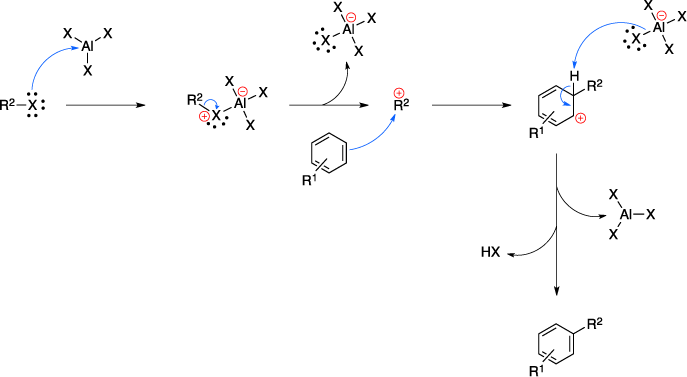Friedel-Crafts alkylation

The Friedel-Crafts alkylation is an organic reaction used to convert an aryl compound and an alkyl halide to a substituted aromatic compound using a Lewis acid catalyst (such as AlCl3). The reaction begins with the Lewis acid abstracting the halide from the alkyl halide to form an electrophilic alkyl cation and a tetrasubstituted aluminum anion. The aromatic compound then attacks the alkyl cation via an electrophilic aromatic substitution (SEAr) to give a cationic product with loss of aromaticity. Deprotonation with the aluminum anion results in the final aromatic product and regeneration of the Lewis acid catalyst.[1]
Mechanism

References:
| 1. |
Crafts, J. M.; Friedel, C.
J. Chem. Soc.
1877,
32,
725–725.
|